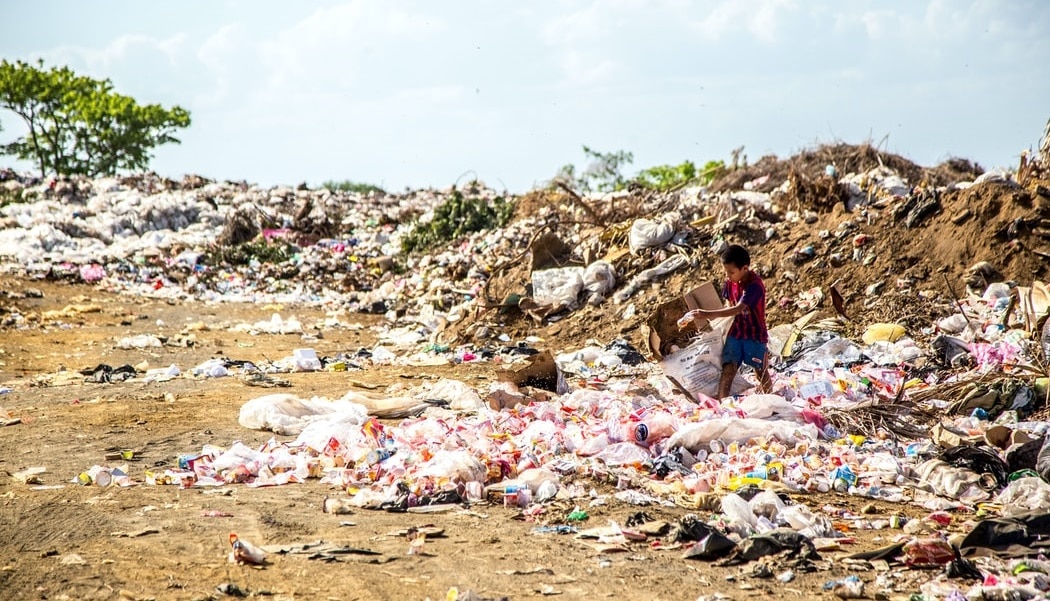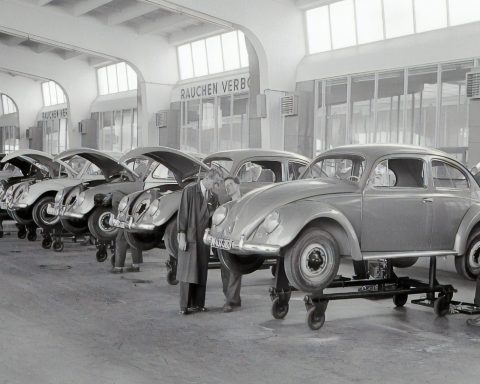
Ihave suffered from asthma for over 30 years and am one of the estimated 5.4 million people currently being treated for asthma in the UK.1 Like many asthmatics, to help to prevent and relieve the symptoms I use inhalers prescribed by my general practitioner. These Metered Dose Inhalers (MDI’s) are often made of three components: the pressured canister, the plastic holder, and the cap (covering the plastic holder mouthpiece). In some cases, an additional plastic counter is added to let the user know how many doses are remaining.
Currently, newly prescribed inhalers are pre-packaged and include one plastic holder and cap per inhaler, even when multiple inhalers are received at the same time. Many people, including myself, require prescription renewals every couple of months. For these renewals there is no need to obtain a new plastic holder each time. The additional plastic appears to be an unneeded waste. The plastic holder can be cleaned and reused multiple times (with new ones available upon request for no charge) to reduce waste and CFC gases.2,3,4
There is no need to obtain a new plastic holder each time.
Yet, it appears that disposal of the inhalers is not a priority for inhaler distributing companies, evidenced by the lack of disposal directions in the enclosed patient information leaflet. Typically, the only disposal information is a directive to talk with one’s pharmacist. Of course, caution is needed when disposing of the pressurised canisters. Yet little information is provided by the pharmaceutical companies, GP practices or pharmacies on how to properly dispose of the canisters, nor how to recycle the plastic components.
Little information is provided …. how to recycle the plastic components
It is important to educate users on the correct method of usage of MDIs.5 Yet it is suggested that there is a lack of research and discussion about the responsibilities of pharmaceutical companies, GPs and pharmacies in educating individuals about the correct way to dispose of these. Given the increasing problems of pollution, helping people recycle plastic inhaler components and creating more environmentally friendly components should be a priority. A recent example of environmentally friendly designs includes the AER8 spacer made from cardboard.6 Additionally, recycling programs modelled after those in place for ink cartridges, mobile phones, and batteries, may be be of benefit.
Acknowledgement: The author would like to thank professor Lori Kogan (Colorado State University) for useful comments on this article.
References
1. Asthma UK (no date.) Asthma facts and statistics. https://www.asthma.org.uk/about/media/facts-and-statistics/?gclid=CjwKCAjw4MP5BRBtEiwASfwAL_WhJXS10feRZIjtutgzyacbvOJnMhTiB2wzr7PlxfSffJ0KGbi5JRoCKtkQAvD_BwE (accessed 10/08/2020).
2. Jeswani, H.K. and Azapagic, A., 2019. Life cycle environmental impacts of inhalers. Journal of Cleaner Production, 237, p.117733.
3. Usmani, O. S., Scullion, J., & Keeley, D. (2019). Our planet or our patients—is the sky the limit for inhaler choice?. The Lancet Respiratory Medicine, 7(1), 11-13.
4. Wilkinson, A. J., and Anderson, G. (2020). Sustainability in Inhaled Drug Delivery. Pharmaceutical Medicine.
5. Price, D., Bosnic-Anticevich, S., Briggs, A., Chrystyn, H., Rand, C., Scheuch, G., Bousquet, J. and Inhaler Error Steering Committee, 2013. Inhaler competence in asthma: common errors, barriers to use and recommended solutions. Respiratory medicine, 107(1), pp.37-46.
6. AER Beatha (no date.) Order AER8 spacer https://www.aerbeatha.com/en/order.html
Featured photo by Hermes Rivera on Unsplash









Vasumathy Sivarajasingam is a GP Partner at the Hillview Surgery and an Honorary Clinical Research Fellow at Imperial College London. Twitter: @vasu27765631.
Climate change causes detrimental impact on our health and wellbeing — a public health emergency. Health care, public health, and the environment are linked, and action on climate change and sustainability would improve public health and equity.1 ‘Net zero’ is a global challenge that affects every society.
The NHS is a huge contributor to the UK’s carbon emissions, accountable for around 4%–5% of England’s carbon footprint2 — equivalent to all the planes taking off from Heathrow in an average year. It has declared its ambition to be the world’s first ‘net zero’ NHS, by 2040. Each and every one of us has a responsibility to limit global warming.
Estimates of the carbon footprint in general practices suggest that 65%–90% is associated with pharmaceutical prescribing.3 Over 75 million inhalers with different drug and inhaler combinations and design characteristics (pMDI, DPIs, and nebulisers) are prescribed yearly in the UK4 for a variety of respiratory conditions, ensuring each patient has the best option. Addressing patient preference is essential (particularly the children, elderly, and those with conditions that may impact on handgrip and manual dexterity) as it enhances patient satisfaction, optimising adherence and improved quality of life.5
To prevent propellant gases, which are powerful greenhouse gases, escaping into the atmosphere then inhalers need to be safely disposed of.6 There is a significant environmental impact of inhaler use, both from the carbon footprint of propellants and plastic waste from discarded inhalers. Metered dose inhalers contain propellants that are greenhouse gases thousands of times more powerful than carbon dioxide — contributing to nearly 4% of the entire NHS carbon footprint and about 25% of the general practice prescribing carbon footprint.7
The plastic and aluminium parts should be recycled, and the harmful greenhouse gases thermally degraded into less environmentally damaging products. If all used inhalers in the UK were returned for safe disposal, this could save 512 330 tonnes of CO2eq annually — the same as a VW Golf car being driven around the world 88 606 times.8
A study by a major pharmaceutical company showed that 29% of inhalers disposed had leftover medication in them. If these inhalers go into a landfill, the medication will leak out and contaminate local water supplies.9 Inhalers ending up in landfill take centuries to biodegrade and in reality this process is not complete as microplastics are known to enter the food chain via this route.4
Safe disposal of inhalers
Patients usually receive instructions on how to use and store medications but rarely get proper information on the safe and appropriate ways to dispose of such medications.10 Little information is provided by the pharmaceutical companies, general practices, or pharmacies on how to properly dispose of the canisters, nor how to recycle the plastic components.11
Pharmacies can safely dispose of inhalers, but this is not routinely advertised to patients.4 Patients should be encouraged to return their expired, unwanted, or used inhalers to a pharmacy for safe disposal, as malpractice would lead to harmful consequences.
At Hillview surgery, we decided to conduct a study to understand the knowledge and practices of patients towards safe disposal of inhalers. To our knowledge, such a study has not been carried out in UK primary care.
Method
The study was carried out on patients contacting clinicians via face to face, telephone, or eConsult between 30 August 2021 and 27 September 2021. The patients were asked about their usage of inhalers (including name, device, medical condition, and duration of usage), inhaler disposal practice, current knowledge of recycling of the inhalers, and sources of information if aware of the recycling methods. A doctor, nurse, and pharmacy technician were involved in collecting the data. Responses were documented on a password protected spreadsheet for data analysis.
We took this opportunity to educate our patients on the importance of appropriate recycling of inhalers. Patients were advised to return their expired, unwanted, or used inhalers back to their local pharmacy for safe disposal. We also asked the patients if their practises of future inhaler disposal will change given the information about recycling.
Findings
One hundred patients were asked to comment on the method of disposal of their inhalers — used to control asthma, chronic obstructive pulmonary disease, and fibrosis — age range was 3–93 years, 44% were male (n = 44), and 56% female (n = 56). There were 16 children aged <10 years for whom the parent answered questions. Ninety-one per cent of patients used their inhalers for >6 months, the majority from childhood.
Of 100 patients, two recycled their inhalers correctly by giving back to the local pharmacy. Eighty-seven per cent (n = 87) were not aware that inhalers could be recycled and put their inhalers in the domestic bin. Eleven per cent (n = 11) put their inhalers in the domestic recycling bin, so had attempted recycling but were not aware that these inhalers would still end up in landfill. All responders confirmed they would return their unused, expired, or empty inhalers to their pharmacy in the future. Patients were surprised that such fundamental information was not shared by clinicians during consultations, or pharmacists during dispensing. Each and every patient acknowledged the importance of working together in achieving the NHS ambition — ‘do our bit’ for the environment however small it is.
Our study highlighted a lack of knowledge and understanding on safe disposal of inhalers among our patient population.
Engagement and empowerment of patients regarding the safe disposal of inhalers should be our priority. The plan is to share our findings with the whole team during our clinical and staff meetings. Our intention is to remind and educate our patients using inhalers of the safe disposal, at every opportunity. This is in addition to the routine medication review and as part of inhaler technique checks. An information sheet explaining the implications of inappropriate disposal of inhalers was produced by our asthma lead to share with patients — either via AccuRx, SMS, or leaflet depending on patient’s choice.
Going forward
Displaying information in waiting rooms, and posting on Twitter and the surgery website would further enlighten our patient population. Inhalers cannot be disposed of in the medical waste disposal box, pharmaceutical disposal box, or sharps container. Another option is to have a collection box in the waiting room that the pharmacy could use to safely collect and dispose of unwanted and used inhalers.
Schools should encourage children and parents to return their inhalers to local pharmacy. There should be more publicity on social media. Furthermore, pharmaceutical companies should encourage recycling on the packaging and every pharmacy should support inhaler recycling.5,12
Conclusion
General practice is ideally placed to introduce changes to become more environmentally sustainable. Safe disposal instructions should be provided by all healthcare providers in routine patient education. Primary care clinicians can easily provide instructions on how to dispose of the inhalers when prescribing and issuing prescriptions.
Persistent education of our community will no doubt heighten the understanding of the importance of appropriate recycling of inhalers. This could potentially encourage patients to prompt their personal contacts and contribute towards increasing public awareness of the consequences of global warming.
References
1. Bhatti S. Embracing ‘net zero’ to reduce the impact of climate change on public health. 2021. https://blogs.deloitte.co.uk/health/2021/07/embracing-net-zero-to-reduce-the-impact-of-climate-change-on-public-health.html (accessed 30 Sep 2021).
2. NHS Digital. Greener NHS campaign to tackle climate ‘health emergency’. 2020. https://www.england.nhs.uk/2020/01/greener-nhs-campaign-to-tackle-climate-health-emergency (accessed 30 Sep 2021).
3. British Medical Association. Sustainable and environmentally friendly general practice: GPC England Policy Document. 2020. https://www.bma.org.uk/media/2570/bma-sustainable-and-environmentally-friendly-general-practice-report-june-2020.pdf (accessed 30 Sep 2021).
4. De Vos R, Rupani H, Longstaff J, et al. Inhaler recycling prevalence in a secondary care clinic in England. Eur Respir J 2020; 56(Suppl 64): 1886. DOI: https://doi.org/10.1183/13993003.congress-2020.1886.
5. Usmani OS. Choosing the right inhaler for your asthma or COPD patient. Ther Clin Risk Manag 2019; 15: 461–472. DOI: https://doi.org/10.2147/TCRM.S160365.
6. Greener Practice. Inhaler disposal and recycling. https://www.greenerpractice.co.uk/inhaler-recycling (accessed 30 Sep 2021).
7. Greener Practice. Asthma care and inhalers. https://www.greenerpractice.co.uk/inhaler-switch (accessed 30 Sep 2021).
8. Recyclenow. What to do with inhalers. https://www.recyclenow.com/what-to-do-with/inhalers-0 (accessed 30 Sep 2021).
9. Brenner B. What do I do with old inhalers? 2016. https://www.medprodisposal.com/pharmaceutical-disposal/what-do-with-old-inhalers (accessed 30 Sep 2021).
10. AlAzmi A, AlHamdan H, Abualezz R, et al. Patients’ knowledge and attitude toward the disposal of medications. J Pharm (Clairo) 2017; DOI: https://doi.org/10.1155/2017/8516741.
11. Oxley J. Asthmatic inhalers: reduce, reuse and recycle. BJGP Life 2020; 5 Oct: https://bjgplife.com/2020/10/05/asthmatic-inhalers-reduce-reuse-and-recycle (accessed 30 Sep 2021).
12. Thomas B, Sukumaran P, George D, et al. Are we handling used metered dose inhaler canisters safely? – A call for action to address an environmental hazard. IP Indian J Immunol Respir Med 2019; 4(1): 24–26. DOI: https://doi.org/10.18231/2581-4222.2019.0006.
Featured photo by Possessed Photography on Unsplash